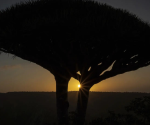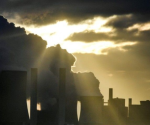Can we learn to live with wildfires? | – The Times of India

In a single week in the fall of 2024, ravaging fires burnt down more than 100,000 hectares of land in Portugal — an area roughly the size of Hong Kong. Plumes of smoke were visible from space. It was one of the largest wildfires in Europe that year, killing at least seven people.Fires on that scale are likely to happen more often, scientists say.“Many parts of Europe are facing a large increase in multi-year droughts, leading to an increased probability of extreme fires,” said Thomas Elmqvist, Environment Director of the European Academies Science Advisory Council (EASAC). “Some areas are likely to experience severe events every two years.”About 60,000 forest fires rage through the EU every year, causing €2 billion ($2.2 billion) in economic losses, the scientists laid out in a report published today. On average, they scorch an area nearly twice the size of Luxemburg — year by year.
Climate change, land use and urbanization fuel fires
Europe is the world’s fastest warming continent. Over the past 30 years, temperatures have risen twice as much as the global average. Elmqvist points to the established link between climate change and elevated fire danger. Increasing droughts and less rain are expected to double the fire risk by 2100.Increasing urbanization is another culprit for the flames. Abandoned farmland and unmanaged vegetation growth have created vast landscapes of flammable biomass, the scientists analyzed. Extensive monocultures, particularly of conifers, pines, and eucalyptus trees also ignite fast.The highest risk in Germany, for example, is in the northeastern part of the country with its large pine plantations, said Elmqvist.
Fewer but more devastating fires in the future
Having monitored wildfires over the course of two years, he concluded that the number of fires and total area burned have actually decreased in Europe, “because we have more capacity to fight them.”But the fires will become larger and more severe.Spain, Portugal, Italy and Greece are most affected, the scientists found.
Mediterranean countries are better prepared for fires compared to other European countries, says Claudia Berchtold from the Fraunhofer Gesellschaft. She is looking at research like the new EASAC study to formulate a strategy for Europe on how to deal with wildfires.“In Germany or in the Netherlands for example, a comparatively small fire would meet a system that is not as well prepared,” she added.More than twice as many urban areas are deemed at risk of fire in Europe than in North America and Asia, the study found.“Urbanizations have been built into pine plantations without thinking about what happens when big fires come,” said ecologist Pierre Ibisch, who co-authored the study. “This is of course very risky.”This happened in the small town of Borkwalde in the German state of Brandenburg. Since 2000, people edged closer and closer into the forest, even after large fires led to evacuations in a nearby town, Ibisch said.
Solutions: Controlled burning, restoring ecosystems and education
Problems like these could be avoided when landscape planners, foresters and farmers join forces, EASAC scientists say. They also call for more awareness and a public debate about the changing nature of fires.“People living next to forests or moving into forests are not aware of the fact how much the fire is here and it’s here to stay, and that we have the chance to reduce the risk by land management,” Ibisch said.The experts also say it’s crucial to implement policies such as the EU’s Nature Restoration law quicker and more consistently, most notably to manage forests sustainably and restore carbon-rich peatlands. Allowing feedstock to graze landscapes and even burn dry stretches under supervision can dramatically increase the intensity of the fire. “Not all fires are bad”, Elmqvist said.Low intensity fires can actually be part of a natural cycle and spur fresh regrowth.Other solutions could be to map forests digitally, to allow for better monitoring. AI can also help in evaluating drone images of wildfires, or to monitor how quickly inflammable vegetation grows back after grazing.
















